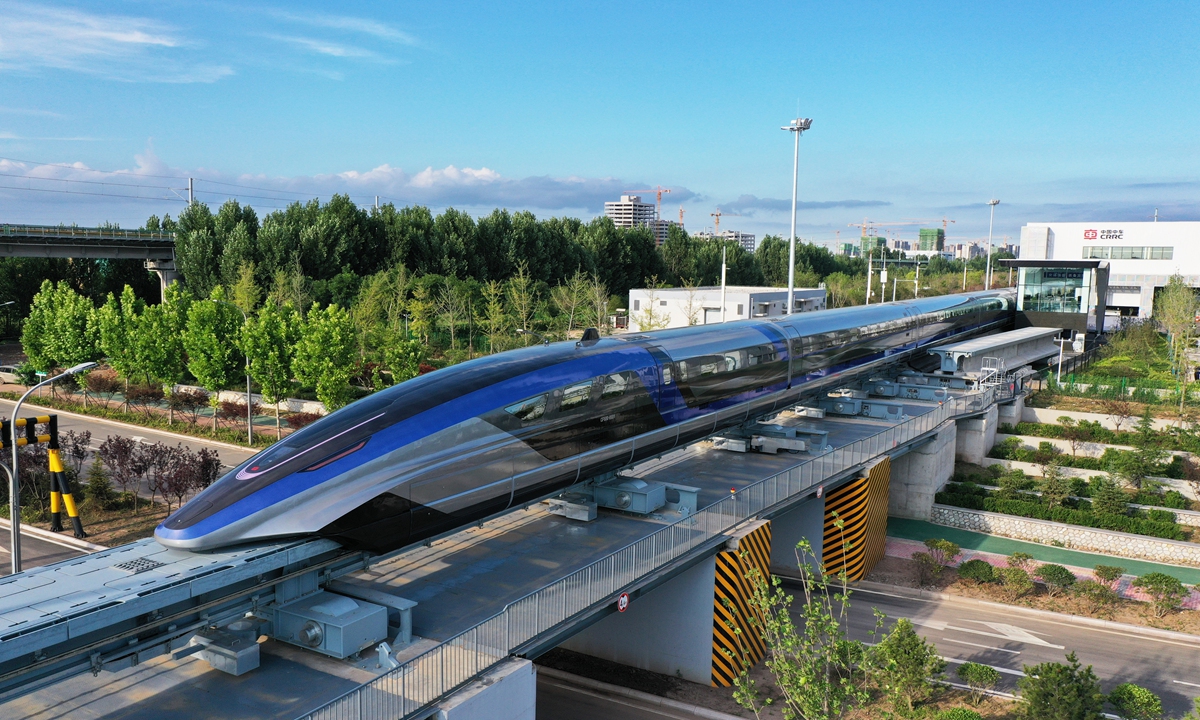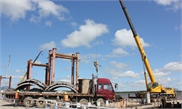Transport industry urged to build up core technology, two government ministries say

Photo shows China's new maglev transportation system in Qingdao, east China's Shandong Province. It is currently the world's fastest ground vehicle. Photo: cnsphoto
China's Ministry of Transport and Ministry of Science and Technology have jointly released a document calling for self-control of core technologies in the transport sector and basically forming a technological innovation system needed for building up a strong transportation network by 2035.
The document pointed out that basic and applied research in transportation will make remarkable progress by 2025, with breakthroughs in core technologies.
By 2035, basic research and original innovation capacity will be improved across the board, achieving self-control in core technologies, Sun Wenjian, spokesman for the Ministry of Transport, said during an online press conference on Thursday.
He said that government agencies have outlined a series of research and development tasks for the urgent and long-term need to build up a strong transportation network.
The tasks include R&D for new transport facilities like ultra-fast high-speed rail lines and commercial flights, and breakthroughs in theories and core technologies of submerged floating tunnels.
"The blueprint underscores the concept that the safe operation of the country's transport sector is of equal importance to agriculture and grain safety, as a deteriorating geopolitical situation may expose the infrastructure of the national economy to monumental risks," Wang Yanan, chief editor of Beijing-based Aerospace Knowledge magazine, told the Global Times on Thursday.
He said that China's R&D work involving such advanced technologies as large passenger aircraft has seen progress, with research expected to accelerate in the coming years.
However, extra attention should be paid to potential technological bottlenecks in emerging sectors as well as rapidly growing traditional sectors in China, for example, unmanned delivery and general aviation, Wang said, noting that the supply of certain types of software and hardware may be found to rely on other countries with the growth of these industries.
In February, China unveiled plans to build the country's strength in transportation over the next 15 years, aiming to be at the global forefront in terms of the quality, intelligence and green transport infrastructure.
By 2035, the comprehensive national transport network will reach about 700,000 kilometers, of which about 200,000 kilometers will be railways, according to the guidelines.
As of the end of 2020, the total track length of China's national railways had reached 146,000 kilometers. China's overall railway building capacity has edged into advanced world class, with high-speed railway, plateau railway and heavy-haul railway technologies leading the world, Liu Zhenfang, head of the National Railway Administration, said on Tuesday.
The railway department will boost R&D for 400-kilometer-per-hour high-speed railways in the next step, he said.
Global Times


